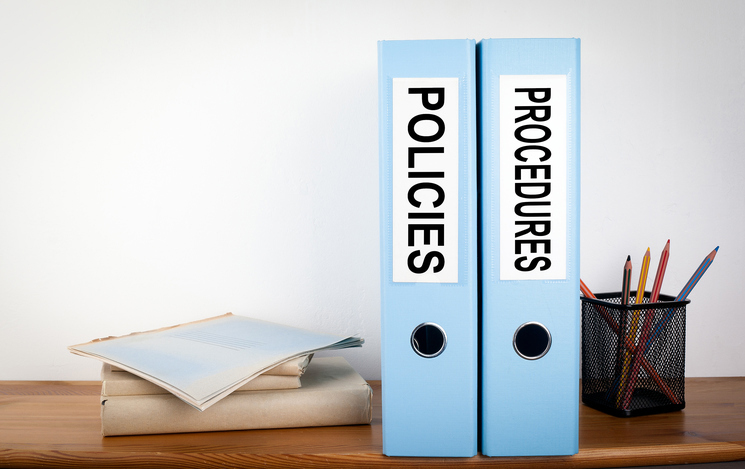Due to the coronavirus pandemic, many employer practices may have changed, which might warrant employee handbook, policy or plan document updates. Use the below list of common changes to help ensure your written documents match your practices.
If you don’t have an employee handbook, now is the ideal time to create one.
Only 26% of small companies with fewer than 10 employees have a handbook and that is risky, since most of these businesses have a tight budget and could ill afford employment litigation, which could run well over $80,000.
Let Marzano Human Resources Consulting ensure you have an employee handbook that will increase employee engagement and mitigate risk to your business.
For those businesses looking to create a new employee handbook, we use a template containing policies universal in most company handbooks and then edit the policies to be more specific to your business.
If you need additional policies, we have a large database of policies, including those related to the COVID-19 pandemic.
Should you want to revise your current handbook or create a new one, contact Marzano Human Resources Consulting for a no-cost consultation. We will discuss your needs and propose a price which we are confident will fit your budget.
LIST OF COMMON POLICY CHANGES DUE TO COVID-19
Paid Leave
- Adjusted to reflect regulatory requirements under the Families First Coronavirus Response Act (emergency paid sick leave and expanded FMLA leave for employers with fewer than 500 employees).
- Create a way to track time used and collect supporting documentation for tax credit purposes.
- Adjusted for any additional state or local paid leave due to the coronavirus.
- Modified to offer increased or decreased benefits to employees due to COVID-19.
- Time-off request procedures clarified to indicate when time off can be required by the employer, should sick employees need to be sent home (paid or unpaid).
- Updated to include whether and how PTO will accrue while on various types of leave.
Attendance/Scheduling
- Adjusted to reflect relaxed attendance policies to encourage sick employees to stay home.
- Added or adjusted flexible scheduling options such as compressed workweeks and flexible start and stop times.
- Meal and rest break policies adjusted to stagger times and processes implemented to encourage physical distancing.
- Adjusted attendance or scheduling policies to be more flexible for parents with child care challenges, or employees with other caregiver issues related to COVID-19.
Safety
- Physical distancing practices detailed to support a safe workplace.
- Employee health screening policies created, including temperature taking, and the confidential handling processes of resulting records.
- Added policy and procedures for employees to report, and how the employer will handle a positive COVID-19 case at the worksite.
- Procedures implemented for employee quarantine requirements due to symptoms or positive test results, including return-to-work procedures (two negative tests, 10 days after symptoms are gone, doctor’s note, etc.).
- Contact tracing practices implemented to help contain the spread of infection.
- Visitor policies updated with health screening practices.
- Children in the workplace policies updated to reflect safety practices.
Travel
- Travel policies updated to reflect essential versus nonessential travel and the impact of domestic or global travel restrictions.
- Quarantine policies added to address both business and personal travel, including pay arrangements when telecommuting is not possible.
Telecommuting
- Telecommuting policies updated to reflect the type of work or specific positions that are able to be done remotely and the procedures for requesting telework.
- Added or updated policies on which telecommuting-related costs the employer will or will not cover.
Technology
- Information technology policies revised to reflect remote work hardware, software and support.
Training
- Added or updated cross-training program to accommodate more employee absences.
- Added or updated telecommuting training program with any new procedures.
Layoff/Recall
- Added policy on layoff and recall procedures, which include information on whether and for how long benefits may continue.
Hiring/Onboarding
- Amended background check policy on delays due to COVID-19.
- Adjusted I-9 procedures for remote hiring.
Group Health Insurance
- Updated plan document for any revised eligibility requirements during a layoff or furlough (such as eligibility being extended to those laid off), and any requirements for reinstating coverage upon returning to work. Remember the Affordable Care Act requires employers to reinstate employees to the plan if removed from the plan for less than 13 weeks.
- Ensured coverage changes, such as adding telehealth benefits, and services not subject to deductibles (such as COVID-19 related testing) have been incorporated into the plan.
- If employee premiums were paid during leave, adjusted policy on how or if the employer will recover those costs from employees.
- Flexible spending accounts updated to include
- over-the-counter drugs (retroactively covered as of January 1, 2020)
- mid-year election changes allowed due to COVID-19
- Updated COBRA policy, election notice and payment periods to include extended deadlines.
401(k) or Other Pension Plans
- Updated any revised eligibility issues due to layoff or furlough. Included information on break in service issues or counting years of service concerns due to layoffs.
- Revised plan to include coronavirus-related distribution
- Adjusted any in-service employee loan requirements, including newly increased loan amounts, eligibility and pay-back procedures.

